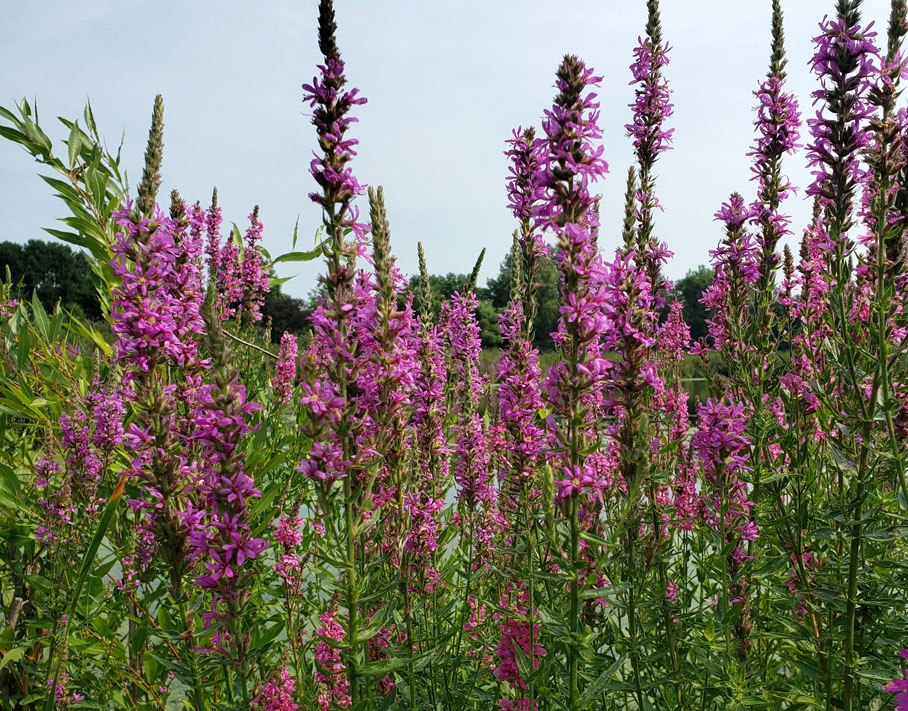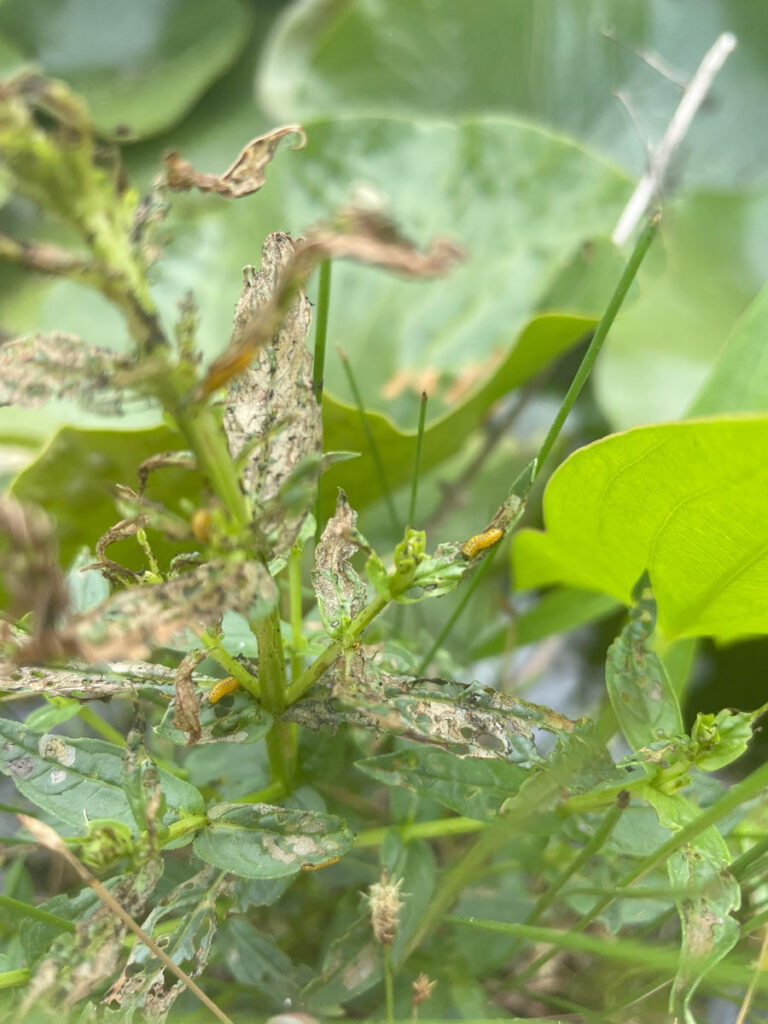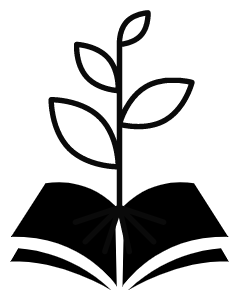Don’t Be Fooled by the Flowers: The Threat of Purple Loosestrife
For the next few months, you may notice tall, vibrant purple flowers blooming around ponds, lakes, and ditches. You might even see butterflies or bees visiting them and think they’re a welcome splash of color. But these aren’t just beautiful wildflowers—they’re purple loosestrife (Lythrum salicaria), one of Minnesota’s most invasive wetland plants.

Purple loosestrife is a perennial plant found in moist soils like lakeshores, wetlands and roadside ditches. It grows 3 to 7 feet tall with square stems and multiple stalks that often remain standing through spring. Leaves are smooth-edged, arranged in opposite pairs or whorls, and rotate 90 degrees from the pair below. Flowers bloom July through September in dense spikes, each with five or six pink-purple petals and a small yellow center.
Purple loosestrife can sometimes be mistaken for fireweed, a native plant with similar magenta flower spikes. However, fireweed has four petals and a round, reddish stem, while loosestrife has five to seven petals and a square stem.
Loosestrife outcompetes native vegetation and forms dense monocultures. Each plant can produce up to 2.7 million seeds, spread by wind, water, birds, and even muddy boots. Seeds can remain viable in soil for years.

Native to Eurasia, purple loosestrife was introduced to North America in the 1800s through ship ballast and ornamental plantings. It’s now invasive in 47 states. In Minnesota, it is classified as a prohibited noxious weed, making it illegal to sell, distribute, or intentionally move. It also cannot be disposed of in landfills.
Pollinators may visit loosestrife for nectar, but none can complete their life cycles on it. Unlike native wetland plants, loosestrife doesn’t support larvae, nesting, or shelter. Just as monarchs rely on milkweed, other pollinators depend on native plants to survive.
Controlling loosestrife helps protect Minnesota’s wetlands, streams and lake shores for future generations. Here are four ways you can help:
- Report it on EDDMapS This citizen science tool tracks invasive species across Minnesota. Reporting sightings helps land managers target control efforts like beetle releases or removal before loosestrife spreads further. Each report strengthens statewide data, guiding ecological restoration and protecting native wetland habitats.
- Support Biological Control If you find more than 50 plants, biological control is effective. The beetles Galerucella calmariensis and Galerucella pusilla feed only on loosestrife, weakening it and reducing seed production. You can raise beetles under netting to protect them from predators or collect and distribute them through programs like the Minnesota DNR’s annual workshop in Roseville.
- Physically Remove It For small patches, dig up plants to remove roots. If digging isn’t feasible, cut flowering stalks before seeds mature (July–early August) and leave them on site to dry. Do not compost or take them to a landfill. Herbicides like Rodeo are sometimes used, but this method is not preferred. It’s non-selective and may harm native plants and aquatic life. Use only with caution and proper permits.
- Talk About It One of the simplest and most effective things you can do is raise awareness. Share what you’ve learned with neighbors, gardening groups, or local conservation clubs. Many people don’t realize loosestrife is invasive or that it harms pollinators and wetlands. The more people know, the more likely they are to take action or avoid planting it.
Purple loosestrife may look beautiful, but its impact on Minnesota’s wetlands is anything but. With community involvement, whether through reporting sightings, raising beetles, digging plants, or spreading the word, we can slow its spread and protect our natural spaces for generations to come.
– By Kim Ury, Master Gardener volunteer
